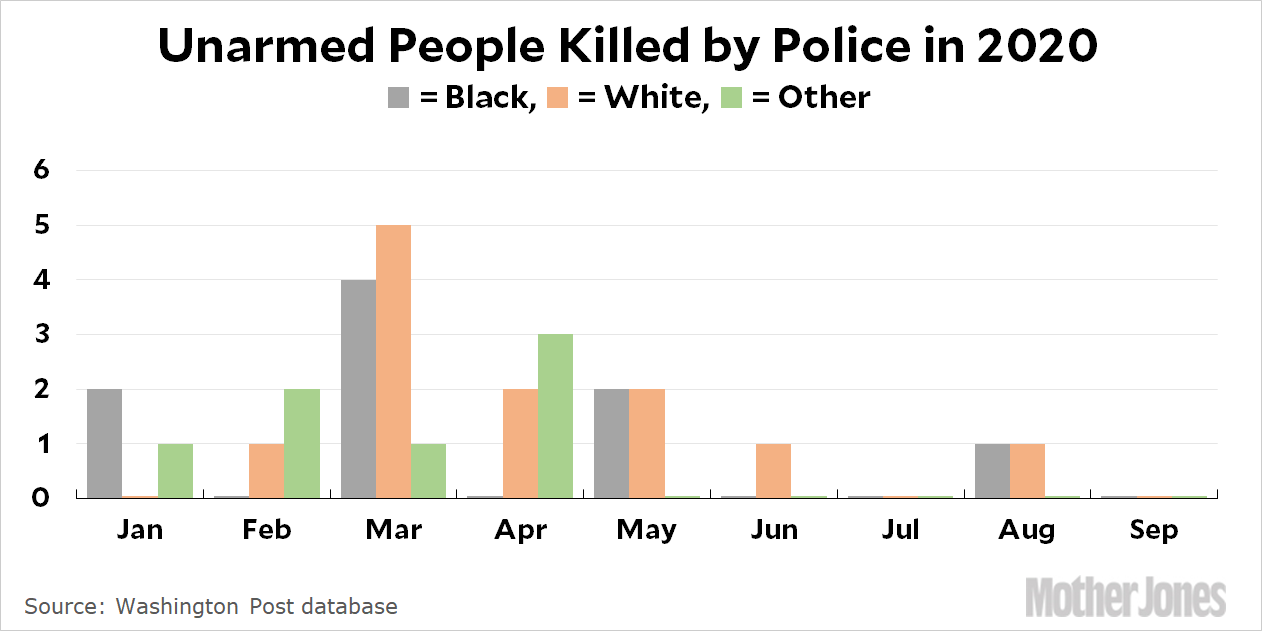Since late spring, police killings of unarmed people have started to trend down. Here’s the data from the Washington Post’s fatal force database:

Up through May, police shot and killed 28 unarmed people. In the four months following the death of George Floyd on May 25th, police have killed three.
It’s a strain to draw any conclusions from such a tiny sample,¹ but I’m still struck by this. It’s an 87 percent drop in police killings of unarmed people, and it began right around the time that protests over Floyd’s death were spreading nationwide. As a comparison, police shootings of armed suspects haven’t changed much: They continued during the summer at the same level as before and continued to disproportionately impact people of color. This suggests that the drop in killings of unarmed people isn’t due to any larger trend in police becoming less lethal. It’s a separate phenomenon.
Very tentatively, then, we may now have a bit of evidence that policing has begun to evolve in response to America’s season of civil unrest over unjust killings. The big picture of overall police killings still hasn’t changed, but collectively police forces do seem to be showing greater restraint about shooting unarmed people—a legally and morally fraught problem, to say the least. If this keeps up, it suggests real impact from the Black Lives Matter protests, and is good news for everyone.
¹Although, for you stats nerds out there, the difference is significant at the p =.01 level.

















